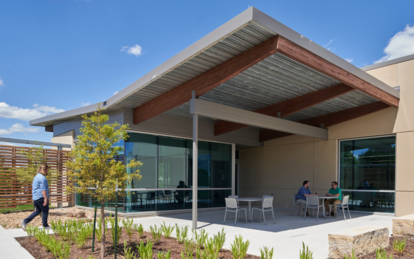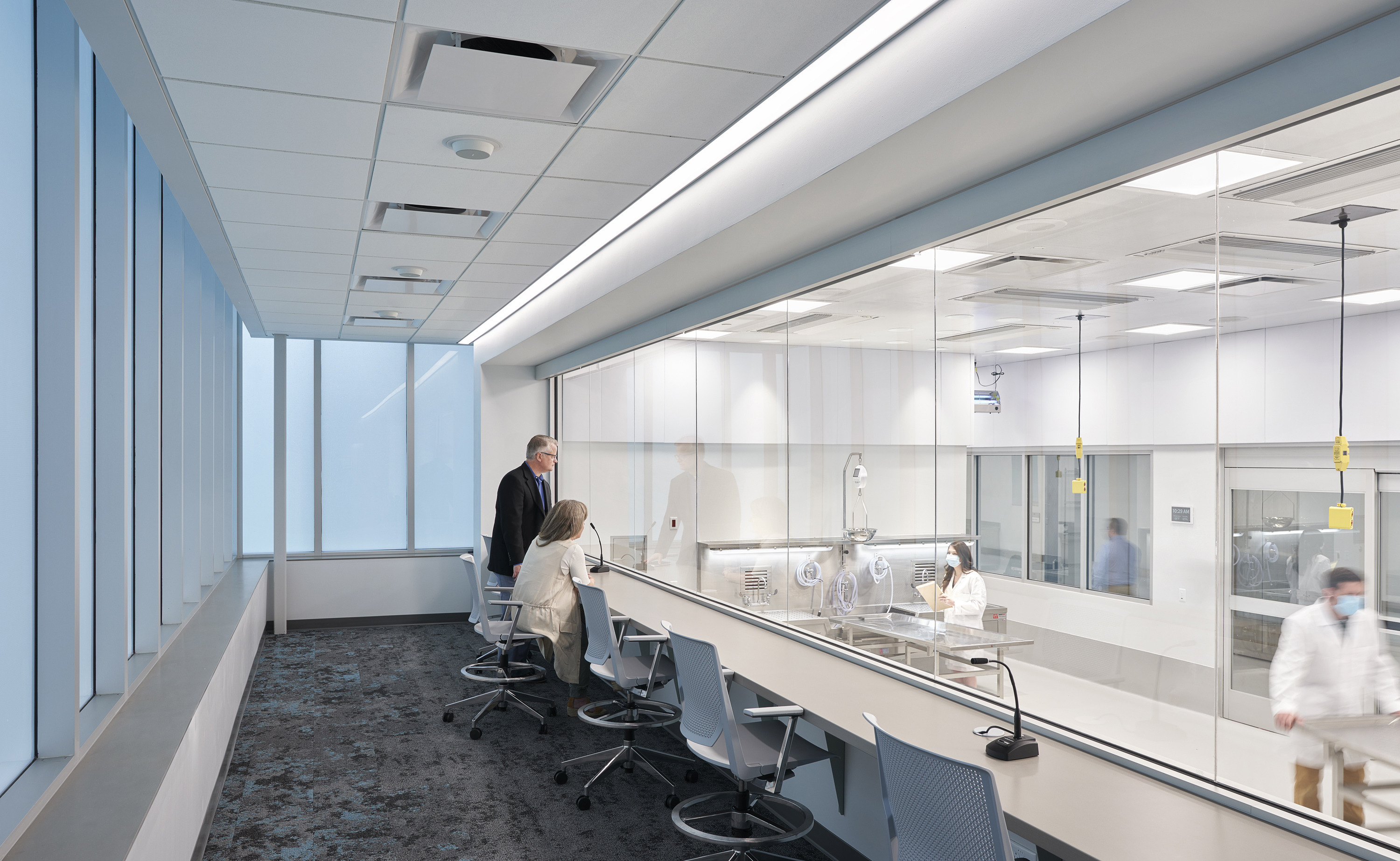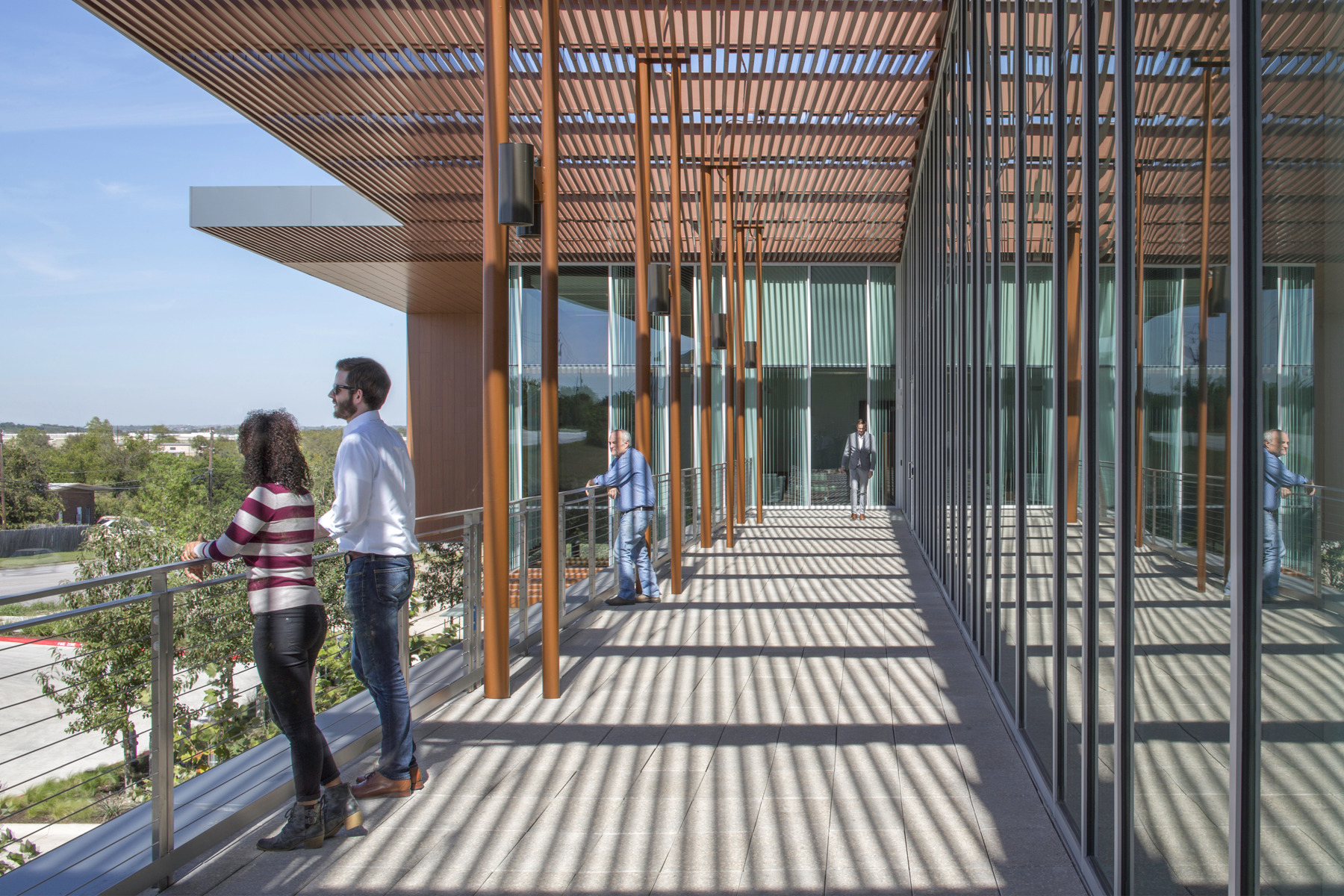Improving Wellbeing in Forensic Science Facilities: Part 1 - Staff

Forensic science facilities are focused on helping technical experts find answers to what happened at the end of life. Proper forensic science helps provide resolution and closure for both families and the local community. Because of the association with a potentially tragic death, stress is inevitable in these settings.
The purpose of this two-part series is to consider how the built environment can help to alleviate some of the stress encountered by the families of the decedent and staff working in the facility. This first post focuses on how design can improve health and wellbeing for staff.
According to Tom Rath and Jim Hartner, Ph.D., employee wellbeing has a tremendous impact on staff retention. When employees consider themselves to be “thriving,” they report 41% lower health-related costs and exhibit a 35% lower turnover rate compared to coworkers who may be struggling.1 This attitude shift was partially due to a staff member’s physical wellbeing.
As designers of forensics facilities, we regularly ask ourselves: How can the physical work environment promote greater employee satisfaction? Although there are many strategies, some of the most impactful are access to daylight, respite and opportunities for relationship building.
Forensic staff are regularly exposed to both emotional and physical stresses. Forensic pathologists, autopsy assistants, crime scene investigators and administrative staff all encounter different types and degrees of stress throughout their workday. To create a truly successful forensic facility, it is essential to address stress through design.
Natural daylight in the workplace has been shown to have positive impacts on the general health of staff and can indirectly lead to greater staff retention. Exposure to sunlight, “plays a critical role in maintaining circadian rhythm”2 and the creation of melatonin, which can improve an individual’s mood.3 To capitalize on this idea, regularly occupied spaces should have access to natural light.
The sensitive nature of some forensic work often poses a challenge to providing natural light in these facilities. For example, autopsy spaces must be visually secure to provide respect for the decedent and ensure the integrity of the case.
Despite these concerns, there are still ample opportunities to design facilities which provide natural light to multiple spaces and to the greatest number of building occupants. The Johnson County Medical Examiner’s observation corridor is a recent example of this approach. Translucent glass walls bring daylight deep into the building, sharing light through the observation space, improving color rendition within autopsy, and improving the openness of the interior corridor.
Other important approaches to alleviating stress are providing moments of respite and connection with nature. A Harvard Business Review survey found that air quality and access to natural light were the most requested perks, with 58% of employees saying they would work and feel better with healthier air and views of the outdoors. Employees are right to be focused on clean air and natural views - they have a meaningful impact on employee wellbeing. According to a study on a University of Oregon office building, occupants of the building with access to exterior vegetative views showed a 10% reduction in sick leave.4
Providing access to views of nature can have profound impacts on stress level, health, and wellbeing. Our designs often seek to help staff reconnect with nature during the workday. At the Travis County Medical Examiner’s Office, a staff balcony was incorporated to provide employees a place to take a break and find quiet solace with views and access to sunlight and fresh air. Even if balconies or outdoor patio spaces are not a possibility, framing views to nature and the landscape can be a cost-effective solution to provide an environment that supports staff health and wellbeing.
Building environments that foster personal connections with coworkers is also an opportunity to improve staff satisfaction and retention. According to a Gallup poll, 30% of employees reported having strong social connections at work. Those employees produced higher quality work, reported higher wellbeing, were less likely to get injured on the job and were seven times more likely to be engaged in their duties.5
Collaboration space that bring staff members together helps to promote a sense of shared mission and purpose. When created as a multi-functional space, increased construction costs can be avoided, but still afford the benefit of encouraging connection and stronger relationships. The secure exterior amenities at the Defense POW/MIA Accounting Agency facility on the island of Oahu, Hawaii provides space for staff members to rest and reconnect while the upper floor break space affords views to the surrounding landscape and includes comfortable seating options to encourage small group conversation.

Defense POW/MIA Accounting Agency's Forensic Identification Laboratory, Staff Break Areas
More than just creating a highly technical facility, a responsible forensic science design must consider the physical wellbeing of all staff. By supporting each staff member with access to daylight, space for respite, and a chance to connect, design can help to improve staff recruitment and retention.
There are multiple opportunities to improve the physical working environment to alleviate regular stresses for staff, but this is only half of the story. In the second post of our series, we will focus on how the design of forensic facilities can help support family members.
1. Rath, T., Harter, J., Wellbeing: The Five Essential Elements. New York, NY: Gallup Press, 2010.
2. Court, A., “The effects of exposure to natural light in the workplace on the health and productivity of office workers: a systematic review protocol.” JBI Library of Systematic Reviews, 8(16):1-19, 2010. Accessed 9/22/2020: https://journals.lww.com/jbisrir/fulltext/2010/08161/the_effects_of_exposure_to_natural_light_in_the.5.aspx
3. Boubekri, M., Daylighting, Architecture and Health: Building Design Strategies. Oxford, UK: Architectural Press, Elsevier 2008.
4. Elzeyadi, I. “Daylighting-Bias and Biophilia: Quantifying the Impacts of Daylight on Occupants Health.” Thought and Leadership in Green Buildings Research. Greenbuild 2011 Proceedings. Washington, DC: USGBC Press. 2011.
5. Rath, T., Vital Friends: The People You Can’t Afford to Live Without. 1st ed. New York, NY: Gallup Press, 2006.

